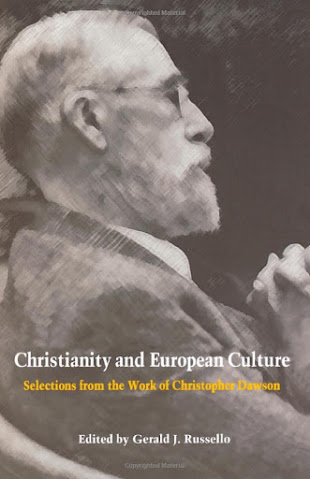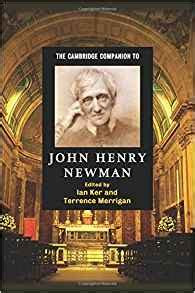Mary, Mother of the Son: Volume I– Modern Myths and Ancient Truth. By Mark P. Shea, Catholic Answers, 2009.
Mark P. Shea is a prominent Catholic apologist and writer, regularly covering theological issues and current events on his popular blog, “Catholic and Enjoying It!” (http://markshea.blogspot.com/). Though much of his work is printed solely on the Internet for religious websites, he has also published several books. Arguably his most ambitious work to date is his trilogy, Mary, Mother of the Son. These three volumes are intended to explain Catholic doctrine regarding Our Lady to an audience that might be unfamiliar with Catholic perspectives, or even hostile to them. Shea, a former Evangelical Christian, writes with the specific aim of addressing Evangelical concerns that Catholic Marian veneration is hazardous to the health of one’s soul, as well as more secular criticisms towards such beliefs. Catholics who want to understand more about their own faith will also find much to enjoy in Shea’s work.
This will be the first of three reviews, each addressing one volume of Shea’s trilogy. In the first, Modern Myths and Ancient Truth, Shea introduces the reader to the goal of these works. Volume One is meant to first explain the role that Mary plays in Catholicism, as well as to explain the ways that the earliest Christians read the Bible, and many other tips on how best to approach the history of Christianity. Indeed, it is clear early on that this book is more than about just the life and impact of Mary, for it covers Church history, contemporary society, and multiple other aspects of integrating faith into one’s daily routine.
While Modern Myths and Ancient Truth is full of historical and theological information, the book is never dry, thanks primarily to Shea’s engaging prose. Shea has a knack for mixing sophisticated and witty socio-historical analysis with humor and pop culture references, all in a way that entertains as much as it educates. Shea can shift from critiquing the true legacy of the Emperor Constantine to utilizing Star Wars quotes to make a point in the space of a few pages.
Shea quips that he wrote this book in part because he wishes that a resource like this had been available for him when he was an Evangelical seeking to learn more about Catholic practices and history. Part of the reason why Modern Myths and Ancient Truth is so effective is that Shea knows his potential audience. Early in the book, he has a wryly perceptive series of fictional sketches where a devout Evangelical seeks to find out why exactly Catholics believe what they do, only to be nonplussed by a badly catechized Catholic whose faith was strained by a parish scandal, a staunch but eccentric Catholic who cannot separate her religious practices from New Age beliefs, and several other characters that illustrate just how hard it is for someone who does not really know anything about Catholicism to find out what the Church truly teaches and what it all means. There is so much misinformation everywhere, ranging from the newspapers to colleges and even some pulpits, that it is hardly surprising that so many people do not understand what the Catholic Church actually tells the world.
When writing this book, Shea has to wrestle with the preconceptions and misconceptions that most people have towards the early history of the Church, as well as the current popular lies and distortions that pervade contemporary culture. Shea dubs such accepted lies “pseudoknowledge.”
Pseudoknowledge is dangerous, not simply because it is a lie, but because it is so mendacious and difficult to eradicate. There is a oft-mentioned saying that “a lie can get halfway around the world before the truth can get its boots on,” and Shea very capably shows how pseudoknowledge causes people to build remarkably strong worldviews and prejudices on foundations of sand.
Shea perceptively defines pseudoknowledge as more than just a mere lie or inaccuracy, but as something that is provably untrue that has been repeated so many times that it has latched onto the public consciousness. The phrase “everybody knows” is bandied about far too frequently, but that is how pseudoknowledge perpetuates. If one hears a statement often enough from a sufficient number of sources, it tends to become accepted as fact, even if there is enough evidence to refute it.
Shea’s debunking of several choice examples of pseudoknowledge is fascinating. For example, every December the public is treated to multiple mentions of the “fact” that Christmas is essentially a rip-off of a long-lasting pagan Winter Solstice festival. This tidbit of information is often used to make Christian practices appear cheapened and somehow less respectable. The early Christians co-opted someone else’s traditions for their own ends. Problem is, this story is pure pseudoknowledge. Christmas celebrations actually predated the Winter Solstice holiday, which was initiated by a Roman ruler as a means of competing with the Christian holy day. The pseudoknowledge stemmed from a scholar making the assumption without evidence that the pagan festival must have come before the Christian one, and the pseudoknowledge has disseminated because the facts have not been told often enough to counteract the misinformation. Another example of pseudoknowledge is that during the Middle Ages “everyone knew” that the Earth was flat. While the many of the masses may not have known the shape of the world, most educated people had known that the Earth was round for centuries. Evidence of this can be seen in Dante’s Divine Comedy, where the Earth is clearly depicted as a sphere.
One figure targeted for well-deserved pillory in this volume is Dan Brown, author of The Da Vinci Code and Angels and Demons, both thrillers that claim to reveal long-buried truths about the sordid and fraudulent origins of Christianity. One New York Times reviewer referred to Brown as an “impeccable researcher,” when in fact the historical claims put forward in Brown’s books were utter bosh. It may seem that an inordinate amount of space is given to disproving Brown’s historical assertions, but when such a work has had such detrimental effects on popular culture and mindsets, it really only seems proper that steps to counteract such pseudoknowledge should be taken wherever they can.
Perhaps the one shortcoming of this book is that Shea does not produce a thorough proposal for how to eradicate pseudoknowledge and its troublesome aftereffects. (Perhaps he does address this in later volumes, I do not know yet.) After all, will correcting this pseudoknowledge with the truth really have a beneficial effect? I know of several people who refuse to be persuaded that The Da Vinci Code is crammed full of inaccuracies, claiming that, “Christians can’t handle the truth.” People can be remarkably resistant to pseudoknowledge, partially because they have to admit that they were wrong. Realizing that long-accepted beliefs about Catholicism are totally false may not lead people directly to the Church.
To use a metaphor, imagine a situation where a wife, previously very much in love with her husband, is convinced by a malicious third party that the husband is having an affair. Despite the husband’s protestations of innocence, the wife initiates divorce proceedings. Some time passes, and eventually the wife learns indisputably that her husband has in fact been completely faithful to her and the third party was lying in a deliberate attempt to destroy the marriage. The couple may try to reconcile, but the wife may be unable to revive all of her former feelings, hampered by the fact that she finds it hard to trust her husband again, even though he did nothing to betray that trust. Additionally, the wife may have great difficulty in dealing with the fact that she was completely in the wrong in this whole mess, and her husband is the injured party. Likewise, the husband, though he wants his family back together again, may find it hard to forgive his wife for the false accusations, the uncomfortable months living in a cheap and dingy motel room after she kicked him out of the house, and the two sets of legal bills he now has to pay. Just because the truth is known, it does not mean that everything is automatically all right. Many Catholics leave the Church because they absorb pseudoknowledge about the Church’s history or actions, and I am very much afraid that it will take more than refuting such misinformation to bring them back and heal the damage, and I have no idea what additional steps ought to be taken to reverse the effects of the pseudoknowledge.
Shea refers to Mary as “the most important woman in history,” and after reading this first volume it is very hard to disagree. Modern Myths and Ancient Truths is a labor of love, and as such contains a lasting resonance and power that sticks with the reader long after the book is closed. Volume One is an easy but very deep and rewarding read, thereby leaving me curious and excited to read the two remaining books in this trilogy.
–Chris Chan







